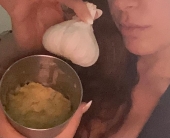
 1
1




Twisted Tree Farm and Nursery
www.twisted-tree.net




Akiva Silver wrote:I was recently interviewed on the permaculture voices podcast about my nursery here in upstate NY. The main topics were plant propagation and the nursery business. If it interests you, here is the link www.permaculturevoices.com/63




Twisted Tree Farm and Nursery
www.twisted-tree.net








Twisted Tree Farm and Nursery
www.twisted-tree.net




Akiva Silver wrote:I over winter seeds just mixed with soil in the ground, no tarp involved. What does matter is keeping rodents from eating them, especially when it comes to nuts and stone fruits. I've been keeping rodents out mostly with hardware cloth lining a pit. This year, I'm putting a lot of seed in buckets buried in the ground. I cut the bucket bottoms out and replaced with hardware cloth and drilled small holes in the tops.
The overall goal is for the seeds to have regular moisture, be exposed to cold, and have excellent drainage around them to prevent rotting. Let me know if you have any questions.
 1
1




Twisted Tree Farm and Nursery
www.twisted-tree.net




Akiva Silver wrote:I over winter seeds just mixed with soil in the ground, no tarp involved. What does matter is keeping rodents from eating them, especially when it comes to nuts and stone fruits. I've been keeping rodents out mostly with hardware cloth lining a pit. This year, I'm putting a lot of seed in buckets buried in the ground. I cut the bucket bottoms out and replaced with hardware cloth and drilled small holes in the tops.
The overall goal is for the seeds to have regular moisture, be exposed to cold, and have excellent drainage around them to prevent rotting. Let me know if you have any questions.




Twisted Tree Farm and Nursery
www.twisted-tree.net








Akiva Silver wrote:I put a good woodsy compost in with my seeds, usually made from some very rotten down leaf mold or old wood chips. I have used sand and I think it works great. I just try to think about how squirrels have been planting nut trees for so long; they keep the nuts buried in the forest duff.
4 years is a really long time to transplant walnuts. If you grew it in a container for that long, it would have an unrecoverable circling root system, and if it was in the ground for that long, it would be such a big root system that it would be hard to transplant. For me, one year for bare root black walnuts is a pretty deep and thick root to dig up.
If you want to start something now that you can transplant in 4 years, then I would go with apples, plums, pears, mulberries, or any shrub like currants or blueberries. And I would wait later to start trees with big taproots like walnut and oak.




My project thread
Agriculture collects solar energy two-dimensionally; but silviculture collects it three dimensionally.




Twisted Tree Farm and Nursery
www.twisted-tree.net




My project thread
Agriculture collects solar energy two-dimensionally; but silviculture collects it three dimensionally.




Twisted Tree Farm and Nursery
www.twisted-tree.net




Akiva Silver wrote:
Also, red oaks make a perfectly good acorn to eat. The leaching process is the same.
I can send scions in the winter if you want, but if you already have healthy oaks there, it might be best just to thin out and use what is there.
My project thread
Agriculture collects solar energy two-dimensionally; but silviculture collects it three dimensionally.

|
On top of spaghetti all covered in cheese, there was this tiny ad:
Rocket Mass Heater Resources Wiki
https://permies.com/w/rmh-resources
|



